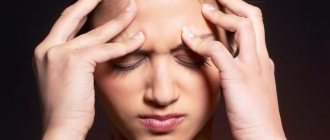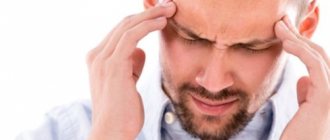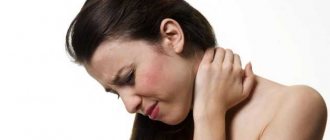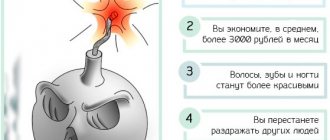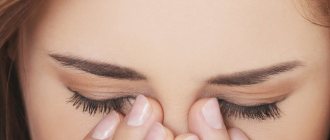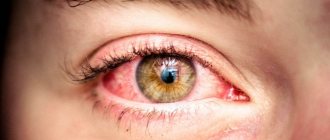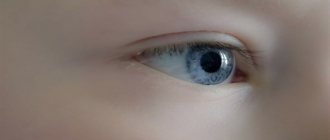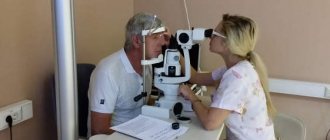Causes of pain
Sometimes the pain in the head is so severe that it is difficult for a person to move. The slightest sound reverberates in the brain, there is a pounding in the temples, and the eyes do not open. The sensations are difficult, they are not easy to bear, and people try to get rid of them by taking pills. But for treatment to help, you need to know the origins of pain.
Research has shown that pain in the forehead and eyes has 5 main causes:
- vascular changes in the brain;
- bacteria and viruses;
- unnatural neck position;
- injuries;
- improper daily routine and stress, emotional and nervous stress.
Food
Our well-being greatly depends on our food. Eating the same dish will have no effect on the health of some people and will cause headaches in the forehead of others. It is not the food itself that influences, but the substances in its composition. Many of them are known to everyone.
Nitrites are used to improve the taste and appearance of meat products. In susceptible people, delicious pink sausages cause dilation of the blood vessels in the head and characteristic pain.
No one denies the benefits of red wine, which, due to small doses of histamine, perfectly strengthens the immune system. But an excess of this substance threatens the development of migraines.
A popular seasoning in oriental cuisine, monosodium glutamate, is poorly absorbed by the body. After a visit to a Chinese restaurant, many people complain of difficulty breathing and throbbing pain in the forehead and temples.
Tyramine is found in chocolate and nuts, and in some types of cheese. Excessive consumption of tyramine, like other amines, leads to a narrowing of blood vessels, and with their subsequent dilation, a painful effect occurs. Caffeine has a similar effect.
Allergic reactions to various substances can manifest as heaviness, pressure or sharp pain in the frontal areas of the head.
Moreover, they can be caused by products that are completely harmless to most people. Thus, allergy sufferers often suffer from citrus fruits or even the smell of chocolate.
Patient Victoria, who suffers from frequent headaches in the forehead, says:
For several years I was plagued by headaches. At first I associated them with overwork, since they appeared on weekdays. Although my job (operator at a confectionery factory) is not too hard and quite calm, I could only breathe a sigh of relief on the weekends, when the pain subsided. My doctor, having learned my profession, recommended greatly reducing my consumption of sweets, especially chocolate. For a sweet tooth like me, this was not easy, since chocolate in the morning and at lunch was a common thing. But after a couple of weeks the result became obvious, which couldn’t help but encourage me. It was difficult for me to change my habits, but it was worth it - now I don’t eat chocolate at all, and the headaches have disappeared. I would never have thought that I was allergic to it.
Refusal of products of dubious production and food that obviously contains substances harmful to your body is the best means of preventing and treating headaches of this type. It is also useful to switch to a balanced diet to improve your overall well-being.
Try to avoid starvation - a decrease in blood sugar due to malnutrition leads to pain from dilatation of blood vessels in the brain. It is better to eat little and often. This allows you to maintain blood sugar at the same level. You can't skip breakfast, and dinner should be the lightest meal of the day.
Ophthalmology
The cause of pain in the eyes that extends to the forehead often lies in concomitant ophthalmological diseases. Symptoms indicate that the surrounding tissues and blood vessels are not receiving enough nutrition. When a person has impaired vision, he is forced to constantly strain his visual muscles in order to focus on a distant or near object, this happens when myopia or farsightedness develops.
Regular visual stress causes tension in the optic nerve, which leads to fatigue. Active innervation transmits the syndrome to the forehead area, resulting in headache. Fixing the problem is not difficult: you just need to visit an ophthalmologist, check your vision and write a prescription for glasses, and the pain will go away.
Headache in the forehead - treatment
Treatments and activities that can help prevent headaches:
- spinal manipulation;
- meditation and breathing exercises
- yoga and tai chi;
- behavioral therapy;
- acupuncture.
You can keep a headache diary to help identify possible causes.
Common headache triggers include:
- smells;
- chemicals;
- use of medications;
- food;
- beverages;
- some types of activities.
Glaucoma
It happens that pain in the orbit occurs due to the development of glaucoma, the cause of the sensation is high intraocular pressure. It manifests itself as a feeling of fullness from inside the eye, and if you press on the eyeball, it will intensify. Subsequently, the pain moves to the forehead. In order not to miss the first symptoms of the disease, you need to know how it manifests itself:
- aversion to bright colors appears;
- slight nausea;
- sometimes it manifests itself quite strongly, even to the point of vomiting;
- when looking at the lamp, rainbow circles are visible;
- the quality of lateral vision decreases;
- feeling of pressure on the eye and forehead.
Glaucoma is a dangerous disease that leads to vision loss, therefore, if you experience discomfort in the eye area, you should definitely visit an ophthalmologist.
Diagnosis and treatment
As soon as the patient begins to notice that a headache in the eye area has become a common cause of poor health, it is necessary to immediately consult a doctor. Such standing poses a great danger if additional alarming signs are noted. Diagnosis is based on complaints, severe symptoms, and additional studies. The patient may be prescribed:
- Blood analysis.
- Magnetic resonance imaging.
- Computed tomography.
- Cardiogram.
- Dopplerography.
Treatment will depend on the results of tests and instrumental studies. If the cause of the headache was overwork or a stressful situation, the patient may be advised to rest more, spend time in the fresh air and take sedatives.
As a rule, complex treatment is prescribed, which includes:
- Drug therapy. It is recommended to take painkillers and medications that will help eliminate the provoking factor.
- Herbal preparations, sedatives.
- Taking vitamin complexes.
- Massage, manual therapy.
If pain in the eyes and head occurs due to osteochondrosis, then local anti-inflammatory drugs (Olfen-gel, Voltaren-gel) are prescribed in parallel.
When your head and eyes hurt, you can rest, try to relax, turn off the lights, open the windows. It is also recommended to get rid of tight, suffocating clothing and remove glasses or contacts. You can turn on relaxing music. Pain caused by overwork can be eliminated if you get rid of the source of stress. Relaxing massages, exercises, herbal tea or milk help well, you can take a bath with chamomile.
Hypertension
When the pressure rises, the pain in the forehead moves down, pressing on the eyes. When stressed, it becomes more pronounced and radiates to the brain. If the sensations have not previously bothered the person, blood pressure should be measured. When its levels are elevated, you need to take a drug to stabilize it and consult a therapist. If hypertension is not treated, the disease will gradually develop and affect the heart, brain, and kidneys. The result of a careless attitude towards one’s health is a hypertensive crisis and a stroke.
When throbbing pain in the head is accompanied by numbness in the hands and speech impairment, an ambulance should be called immediately. The symptoms resemble a stroke; delay is life-threatening.
Which specialist should I contact?
Depending on the specific characteristics of the headache, the following specialists can help the patient:
- Therapist. The first stage of his work is a basic survey, but thanks to detailed information about the patient’s problem, the doctor can refer him to the necessary specialist.
- Neuropathologist. Will provide treatment in case of neuralgic disorders detected by the therapist. If pain bothers a person often, its intensity is high, then you should immediately contact this doctor.
- Psychotherapist. He will prescribe the necessary therapy if a person has signs of depression, constant mental stress, or migraines that are not caused by injuries.
- Reflexologist. After visiting a therapist or neurologist, for the purpose of prevention, you can contact this specialist, who deals with pressing and influencing points on the body with fingers, magnets or needles.
- Mascarpone - what is it: recipes with cheese
- How to pickle onions - recipes with photos. How to deliciously pickle onions for salad, fish or meat
- Sinusitis - what is it and how to treat it at home Symptoms of sinusitis and medications for children and adults
Migraine
Migraine often causes pain in the eye sockets and frontal area. It differs from a regular headache in its unilateral localization. Women complain of migraine symptoms more often than men:
- pulsation begins at the temple and at the back of the eye;
- then it sends it to the brain;
- nausea appears;
- some people react strongly to bright light;
- It's difficult to focus your gaze.
The duration of the attack is sometimes only a few minutes, sometimes it lasts for hours, sometimes it lasts for 3 days. Often the pain is so intense that the person loses the ability to communicate and move. The provocateurs that cause migraine are:
- weather change;
- hypothermia;
- stress;
- overwork;
- some food and drinks;
- sometimes it's a reaction to smells.
It is impossible to eliminate migraine-like pain with analgesics; there are drugs that can stop an attack at the very beginning. If you are prone to migraines, your doctor will help you get rid of the symptoms of the pathology.
When similar pain bothers you after hitting your head, a concussion cannot be ruled out; if such a situation occurs, you should consult a doctor immediately.
Cluster pain
When compared with other types of sensations, pain in the frontal part of the head during beam (cluster) attacks is the most intense. The reasons for their appearance have not been established; examination usually does not reveal changes. It is known that the stronger sex suffers from the disease three times more often than women. Cluster pain is a series of attacks lasting several minutes, hours or days.
The difference between cluster pain syndrome and migraine-like pain is lacrimation that occurs from an intense and sharp painful attack in the temple and eye. It has been noticed that pathology appears at the same time of year or at a certain time. After a series of attacks, the period of rest can last for years.
This type of pain is characterized by:
- sudden appearance and intense activity; observed in any part of the head, but concentrated in one half;
- pain is concentrated in the eye on the painful side of the forehead;
- it can be aching or throbbing;
- localized in the eye sockets and forehead;
- intensifying, it puts pressure on the eye from the inside;
- the patient's nose is stuffy;
- Tears flow profusely from the eye;
- the pupil is constricted, the lower eyelid droops, and the upper eyelid droops.
When the attack ends, your health returns to normal. We have not yet learned how to treat cluster pain, but the manifestations of the pain syndrome can be reduced by using oxygen treatment (oxygenation). The patient is in a pressure chamber, inhaling gas through a mask, or ice caine is instilled into the nose.
Diagnostic features
Treatment should not only be of high quality, but also timely. If treatment measures are used incorrectly, this can only worsen the condition.
You must first undergo a thorough examination.
- Magnetic resonance imaging.
- Angiography.
- X-ray.
- Electroencephalography.
It is necessary to undergo an examination of the blood vessels of the brain and cervical spine. As well as laboratory tests of urine and blood.
The large number of possible reasons for such pain makes it difficult for doctors. However, with the right approach, it is possible to identify the real problem already in the first days. After the survey, the doctor will prescribe the necessary examinations that can confirm the presence of any abnormalities in the body. To do this you will need to go through the following procedures:
- Blood and urine tests.
- CT, MRI.
- EEG.
- Radiography.
- Angiography.
- Dopplerography.
Additionally, the doctor may issue a referral to other specialists to rule out other causes of pain.
In order for the treatment not to cause even more harm, it is necessary to find out exactly why discomfort is felt in the frontal part of the head. To do this, you should undergo a thorough examination, which involves the following procedures:
- Radiography.
- MRI and CT.
- Dopplerography (examination of the blood vessels of the brain and cervical spine).
- Electroencephalography.
- Angiography.
- Laboratory tests of blood and urine.
In addition, you need to see the following specialists: neurologist, therapist, cardiologist, ENT specialist, ophthalmologist. If the patient has recently been injured, then additional consultation with a traumatologist is necessary.
Our ancestors slept differently than we do. What are we doing wrong? It’s hard to believe, but scientists and many historians are inclined to believe that modern man sleeps completely differently than his ancient ancestors. Initially.
Never do this in church! If you are not sure whether you are behaving correctly in church or not, then you are probably not acting as you should. Here's a list of terrible ones.
7 Body Parts You Shouldn't Touch with Your Hands Think of your body as a temple: you can use it, but there are some sacred places that you shouldn't touch with your hands. Research showing.
20 photos of cats taken at the right moment Cats are amazing creatures, and perhaps everyone knows this. They are also incredibly photogenic and always know how to be in the right place at the right time.
15 Cancer Symptoms Women Most Often Ignore Many signs of cancer are similar to symptoms of other diseases or conditions, which is why they are often ignored.
Pay attention to your body. If you notice
Diseases and infections
Pain in the frontal part of the head often accompanies the development of a viral infection, ARVI, acute respiratory infections. When the disease passes, the headaches will disappear without a trace.
But sometimes this painful sensation is evidence of an infectious disease of the brain - meningitis, which manifests itself:
- dizziness;
- general weakness;
- an increase in temperature, in a difficult situation the indicators rise to critical levels;
- Nausea and sometimes vomiting bother me.
When these symptoms cause severe headaches, a doctor should be called immediately. Meningitis is dangerous and requires timely treatment, otherwise coma develops and death occurs. Similar symptoms appear when infected with encephalitis, and are additionally accompanied by gastrointestinal disorders.
Regular and intense pain may indicate a tumor located in the frontal region, temporal arteritis, trigeminal neuralgia, Horton's syndrome.
Tension headache
Photo: Wikipedia
Tension headaches can begin with pain in the forehead or temples. This type of pain is the most common type of headache.
Tension headache symptoms
This headache has the following symptoms:
- constant pain that spreads throughout the head;
- pain that often starts in the forehead, temples, or behind the eyes;
- pain of the face, neck and shoulders;
- sensation of pressure, as if a hoop were squeezing the head.
Tension headaches usually last from 30 minutes to several hours, but can last for several days. Tension headaches are often triggered by stress, anxiety, or depression. Sometimes they are caused by fatigue, poor posture or problems in the cervical spine.
Tension headaches usually go away with pain relievers such as ibuprofen, acetaminophen, or aspirin. May also be useful:
- massage;
- exercises for the cervical spine;
- hot shower.
For chronic cases, amitriptyline may help.
Sinusitis
The inflammatory process in the nasal and frontal sinuses is also a source of pain in the eye sockets and forehead. In this case, the painful sensations intensify when the head is tilted forward. These are manifestations of acute sinusitis: sinusitis or sinusitis develops.
If you have sinusitis, you should not rely on traditional methods; a doctor can eliminate the disease; he will determine the degree of the inflammatory process and prescribe medications suitable for a specific type of infection. You should not take antibiotics on your own:
- Firstly, in case of inflammation caused by a fungus or allergy, they are useless.
- Secondly, the doctor will select exactly the drug that can fight a specific type of bacterial flora.
Violations
If a person suspects a malfunction of the blood vessels, then he is recommended to undergo an MRI or CT scan (computed tomography). With the help of these procedures, it will be possible to say for sure why blood circulation in the brain is impaired. These are: migraine, vasoconstriction, which can lead to stroke and ruptured veins.
In any case, anything related to vascular disease and circulatory disorders requires immediate treatment.
Migraine can be recognized by frequent and unbearable pain in a certain part of the forehead, which then spreads to the temples and eyes. Sometimes with a migraine, a person’s head feels like it’s splitting from the inside. The pain is especially intense when the head is tilted.
Moreover, migraine is not only wild pain pressing on the forehead and temples. They are often accompanied by auditory and visual hallucinations, nausea, vomiting, and apathy.
A child suffering from migraine immediately becomes indifferent to everything, eats little and moves little. Very often, children are misdiagnosed, assuming from external symptoms that these are intestinal infections. Therefore, if a child has these manifestations, it is recommended to immediately be examined by a doctor.
The narrowing of blood vessels in humans is dangerous because the amount of blood that enriches the brain with oxygen and nutrients does not decrease. Blood circulation slows down, the brain experiences oxygen starvation and pain occurs. At any moment, a pressure vessel can burst, and this leads to a stroke.
In medicine, there are drugs that improve their functioning and can relieve headaches.
Overwork
Fatigue and overwork from mental stress are quite capable of causing severe pain in the eye sockets and forehead. Their distinctive feature: pulsation. This feeling usually appears in the evening, towards the end of work. Students and schoolchildren often complain about the sensation during exam periods, when the brain processes a large amount of information and requires mental effort. You can eliminate these feelings:
- if you allow yourself to rest a little;
- relax by sitting with your eyes closed;
- do gymnastics;
- go out into the fresh air.
Pain itself does not require treatment, but its frequent occurrence indicates constant overwork, and this can affect a person’s health.
Treatment of pathologies
Treatment of pain in the forehead area is individual and is prescribed after the exact cause has been established. Therapy involves the use of the following measures:
- relief with analgesics and home regimen - for pain caused by tension and fatigue;
- stimulation of brain function with methylxanthines;
- elimination of the inflammatory process with non-steroidal anti-inflammatory drugs.
What to take for cupping:
| Name of the medication | Standard dosage | Application period |
| NSAIDs: Ibuprofen, Diclofenac, Naproxen. | Ibuprofen: 200-800 mg per day; Diclofenac: 50-100 mg; Naproxen: 500-1000 mg. | Short-term, no more than 5-7 days. |
| Acetylsalicylic acid (Aspirin) | Up to 1000 mg per dose, no more than 3000 mg per day. The interval between doses is at least 4 hours. | Maximum 5 days. |
| Paracetamol | 200-500 mg per dose in adults, no more than 1200 mg per day. | No longer than 5 days. |
| Metamizole sodium | 200-500 mg 2-3 times a day, no more than 1000 mg. | Suitable for long-term use, but only under medical supervision. |
| Phenazone | 250-500 mg, no more than 3000 per day. | The course of treatment is 10 days. |
Ergotamines are used to improve blood circulation in the brain. They can only be prescribed by a doctor, since the list of side effects is very wide.
To eliminate vascular spasm, antispasmodics are recommended, for example, Noshpa, Spazmolgon
Vasodilation is achieved with the help of beta-blockers. The drugs should be taken carefully, on the recommendation of the attending physician. It is important to understand that they help eliminate the symptom – headache
But they don’t eliminate the cause
It is important to understand that they help eliminate the symptom – headache. But they don’t eliminate the cause
It is up to the doctor to decide how to treat this condition.
Folk remedies
Alternative medicine also offers recipes to help relieve headaches in the forehead and temples. Here are some folk remedies:
- Valerian tincture. Pour boiling water over 20 g of plant roots and leave to burn over low heat for half an hour. Let it brew a little, strain and drink in 3 batches. Duration of use is a week, after which take a break of several days.
- Let a few pieces of aloe steep in the chicory juice. Drink 150 ml of the product. It will quickly relieve a migraine attack.
- Pour 20 g of cinnamon into half a glass of hot water. After the infusion has cooled, add a little sugar. Drink a couple of sips every hour.
Today, homeopathy is popular in the treatment of various diseases, but its effectiveness has not been proven.
Preventive measures
When the front of your head hurts, it’s hard to concentrate, work and rest fully, getting up in the morning turns into agony. Therefore, it is necessary to take measures to avoid discomfort
The following tips will help with this:
- Drink more liquid during the day: clean water, juices, fruit drinks, compotes.
- Stop smoking and drinking alcohol.
- Get enough sleep, do not engage in mental activity shortly before bedtime. If you feel sleepy during the day, try to stay awake to get a good night's sleep.
- Watch your diet. Enrich it with vitamins, micro- and macroelements.
- Try to breathe more fresh air, especially before bed.
- Monitor the pressure if you feel discomfort. Deviations from the norm (it is 118/94) require consultation with a doctor.
- When working sedentarily, sign up for a shoulder, neck and head massage to improve blood microcirculation and relax muscles.
- Treat viral and infectious diseases in a timely manner to prevent complications.
- Avoid stressful situations, develop emotional resistance to difficult situations, take a course of sedative medications to reduce suspiciousness and anxiety.
Timely treatment of headaches and its prevention will help avoid various complications.
Other reasons
Headaches sometimes have relatively harmless causes:
- Many have noticed that being in the wind without a hat subsequently causes pain in the head.
- The hot sun also becomes the basis for the appearance of unpleasant symptoms. This happens when a person does not wear a Panama hat in the heat and neglects sunglasses.
- If the mucous membrane of the eye is injured: a speck has entered.
- I had to work at the computer for a long time, and the mucous membrane of the eyeball becomes dry.
- Sometimes pain in the forehead that spreads to the eyes is caused by toxins, such as excess alcohol drunk the day before.
- In women, symptoms occur during hormonal changes: menopause, PMS.
In any case, if the pain does not go away or intensifies, consulting a doctor is necessary.
How to eliminate pain
The occurrence of painful sensations in the forehead has a different origin, so it is impossible to give specific recommendations for each person without an accurate diagnosis; treatment will be prescribed by a specialist. You should not deal with pain using home methods; some manifestations are dangerous to human health and sometimes life.
When pain appears as a result of fatigue, hot herbal tea, soothing infusions of lemon balm and mint, and aromatherapy will help relieve the condition. If it is difficult to endure, you can take analgesics for temporary relief.
Pain is a signal that not everything is in order in the body. In any case, when the forehead hurts and there is pressure in the eyes, it is not enough to simply stop the syndrome. Constantly taking painkillers is harmful to the body, they do not eliminate the problem, but only eliminate the symptoms and drive the disease inside. Only a specialist can determine its true cause and prescribe the correct targeted treatment.
